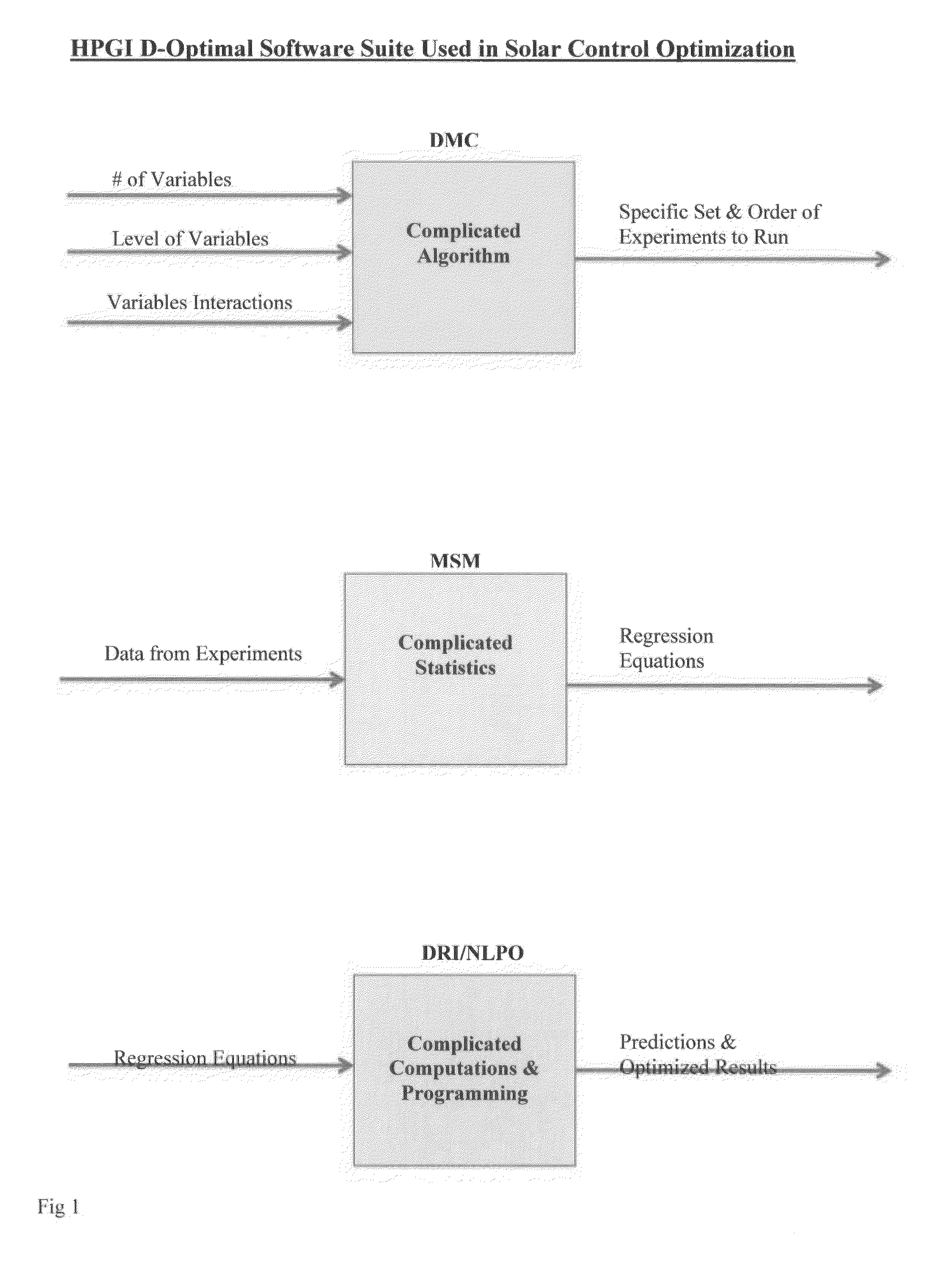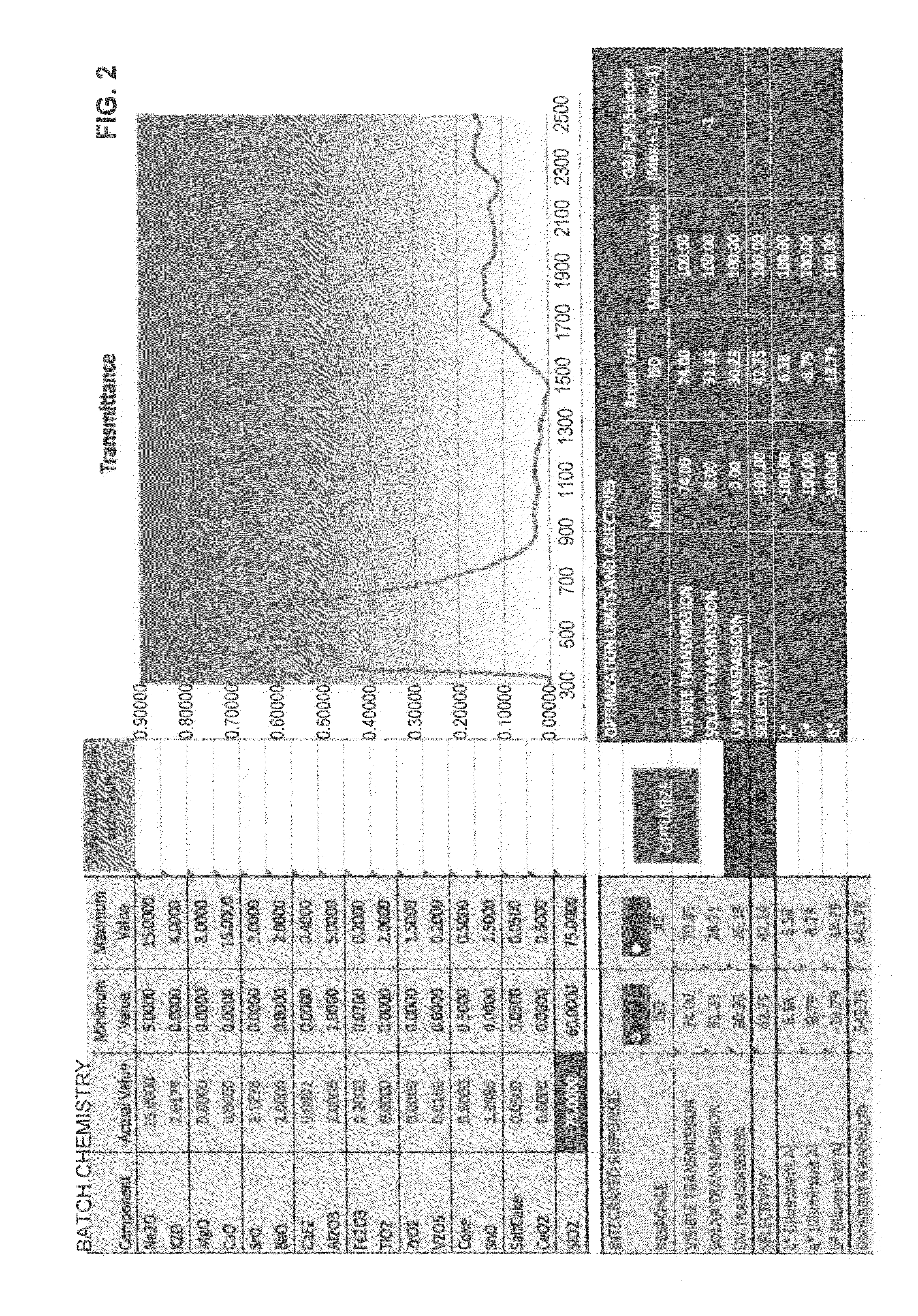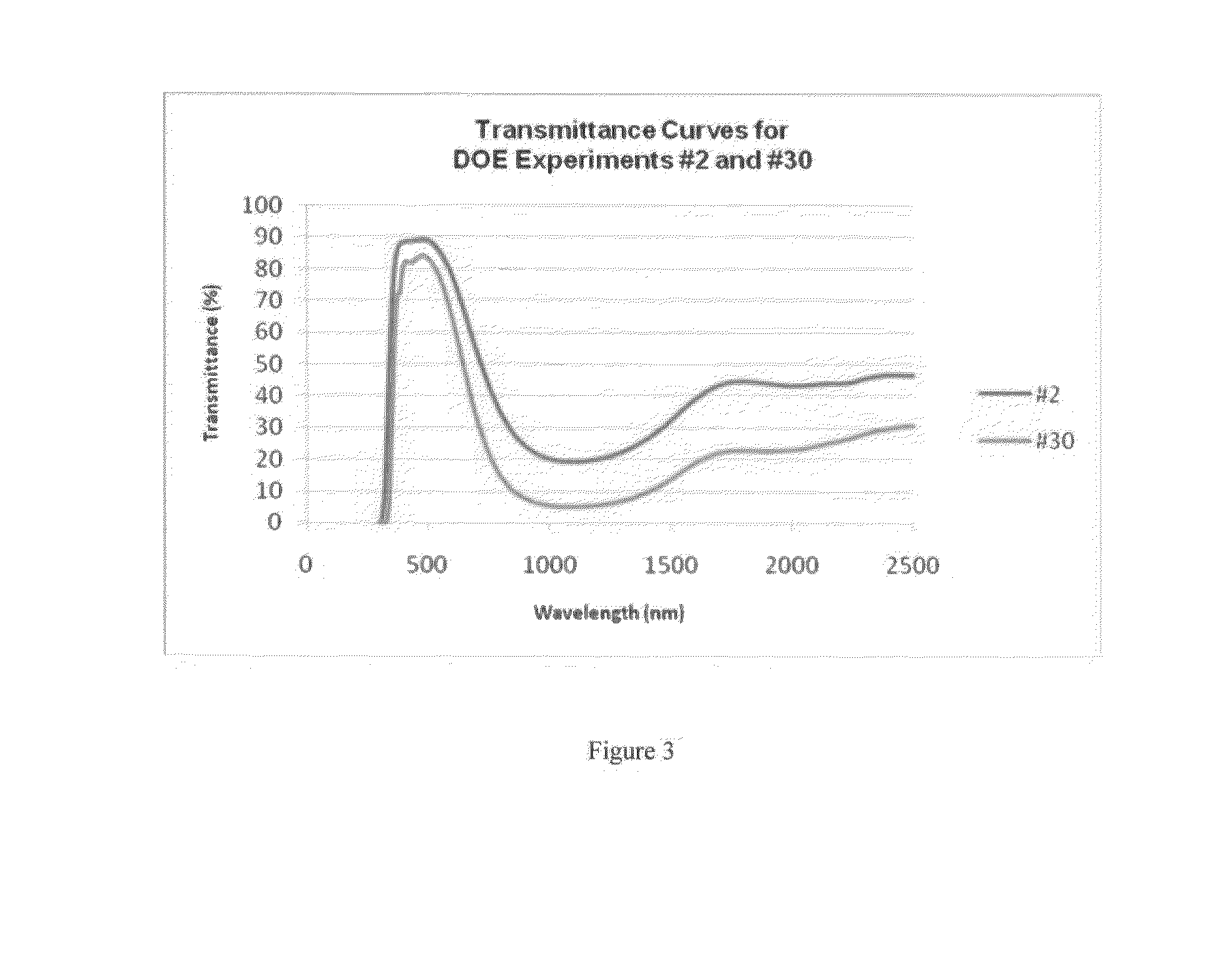High visible transmission glasses with low solar transmission
- Summary
- Abstract
- Description
- Claims
- Application Information
AI Technical Summary
Benefits of technology
Problems solved by technology
Method used
Image
Examples
example 1
[0127]A high visible, low solar transmission glass product made from a glass batch composition that has in mole percent:
[0128]75.0% SiO2
[0129]14.54% Na2O
[0130]3.43% K2O
[0131]1.89% SrO
[0132]2.00% BaO
[0133]0.06% CaF2
[0134]1.00% Al2O3
[0135]0.20% Fe2O3
[0136]0.50% Coke
[0137]1.33% SnO
[0138]0.05% Saltcake
[0139]This can have a visible transmission in excess at 71% and a total solar transmission less than 36% at 4 mm glass thickness, and a blue green external color, e.g., 86-92 L*, −27 to −30 a*, −90 to −100b* and dominant wavelength of 480-510 nm.
[0140]The glass batch composition can also have an addition of less than 0.1% CeO2. It can also have additional minor ingredients less than 1% selected from the list comprising:
[0141]CaO, MgO, TiO2, ZrO2, V2O5, MnO, Se, P2O5, Bi2O3.
[0142]Any of these values can be varied by plus or minus 25% in one embodiment.
example 2
[0143]A high visible, low solar transmission glass product made from glass batch composition ranges comprising in mole percent:
[0144]60-78% SiO2
[0145]11-20% Na2O
[0146]0-10% K2O
[0147]0-18% CaO
[0148]0-10% SrO
[0149]0-15% BaO
[0150]0-5% ZrO2
[0151]0-1% CaF2
[0152]0-2.6% Al2O3
[0153]0-12% MgO
[0154]0.05-1% Fe2O3
[0155]0-0.9% TiO2
[0156]0-0.6% Coke
[0157]0-5% SnO
[0158]0-0.08% Saltcake
[0159]0-5% CeO2
and V2O5 is free;
wherein further comprising a visible transmission in excess of 69% and a selectivity defined by a difference between a visible transmission and a solar transmission of greater than 31.5 at 4 mm glass thickness and using ISO measurement.
[0160]The glass batch composition of Example 2 can have any additional minor ingredients less than 1% selected from the list comprising, MnO, Se, P2O5, Bi2O3.
[0161]The glass batch composition of Example 2 further comprising a UV transmission less than 16% at 4 mm glass thickness, wherein CeO2 is 0.1-1%.
example 3
[0162]The glass batch composition of Example 2, wherein the glass composition ranges comprising in mole percent:
[0163]65-78% SiO2
[0164]0-4% MgO
[0165]0-0.7% TiO
[0166]0.1-5% SnO
[0167]Example 3 can produce a glass batch composition range that a visible transmission in excess of 75%.
[0168]Example 3 can produce a glass batch composition range that the selectivity is greater than 34.5.
[0169]Example 3 can produce a glass batch composition range that the solar transmission is less than 36.5% in the case of the visible transmission equal to 72% by adjusting glass thickness.
PUM
| Property | Measurement | Unit |
|---|---|---|
| Length | aaaaa | aaaaa |
| Fraction | aaaaa | aaaaa |
| Fraction | aaaaa | aaaaa |
Abstract
Description
Claims
Application Information
 Login to View More
Login to View More - R&D
- Intellectual Property
- Life Sciences
- Materials
- Tech Scout
- Unparalleled Data Quality
- Higher Quality Content
- 60% Fewer Hallucinations
Browse by: Latest US Patents, China's latest patents, Technical Efficacy Thesaurus, Application Domain, Technology Topic, Popular Technical Reports.
© 2025 PatSnap. All rights reserved.Legal|Privacy policy|Modern Slavery Act Transparency Statement|Sitemap|About US| Contact US: help@patsnap.com



